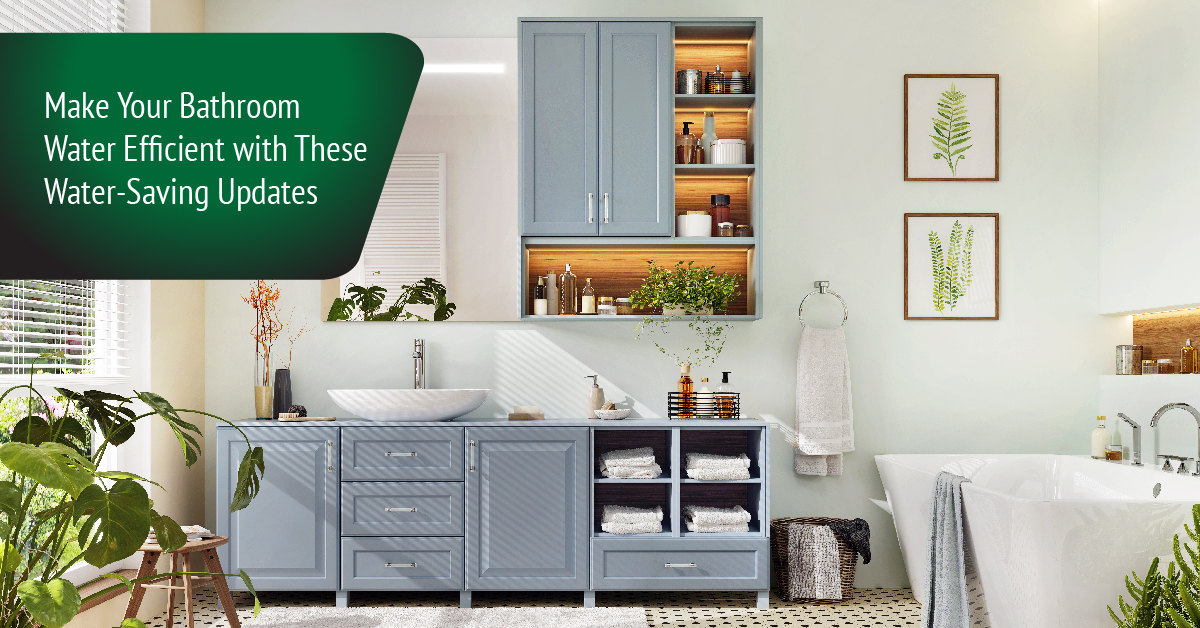Make Your Bathroom Water Efficient with these Water-Saving Updates

In a world where environmental sustainability is gaining increasing importance, making conscious choices to conserve water has become essential. One area of our homes where water usage can be optimized is the bathroom. From showers to toilets, there are several water-efficient products and updates that can help you minimize water wastage without compromising on comfort and functionality. In this blog, we'll explore some of the best ways to make your bathroom water-efficient.
1. Low-Flow Showerheads
Traditional showerheads can use a significant amount of water in a short period. By replacing them with low-flow showerheads, you can reduce water consumption without sacrificing water pressure. These showerheads incorporate technology that mixes air with water to deliver a satisfying shower experience while using less water. Look for models with a WaterSense label, indicating that they meet the Environmental Protection Agency's water efficiency standards.
2. Dual Flush Toilets
Toilets are one of the primary sources of water consumption in any household. A dual flush toilet offers two flushing options: a lower volume flush for liquid waste and a higher volume flush for solid waste. This flexibility allows you to use only the amount of water necessary, making it a great water-saving update for your bathroom. Many modern dual flush toilets also meet stringent efficiency criteria.
3. Faucet Aerators
Faucet aerators are small, affordable devices that can be added to your existing bathroom faucets. They work by mixing air with the water flow, maintaining a strong stream while using less water. Installing faucet aerators is a quick and effective way to reduce water wastage from sinks, and they come in various flow rates to suit your preferences.
4. Tankless Water Heaters
Traditional water heaters keep a large tank of water constantly heated, leading to energy and water wastage. Tankless water heaters, also known as on-demand water heaters, heat water only when you need it. They provide hot water instantaneously, eliminating the need for a storage tank. By transitioning to a tankless water heater, you not only save energy but also reduce water wastage associated with waiting for the water to heat up.
5. Smart Water Monitoring Systems
Incorporating technology into water conservation efforts can be highly effective. Smart water monitoring systems allow you to track your water usage in real-time through a smartphone app or a connected device. These systems can identify leaks, provide insights into your consumption patterns, and encourage you to make more conscious water usage decisions.
6. Efficient Bathtubs
When remodeling your bathroom, consider installing water-efficient bathtubs. Modern designs focus on optimizing water use without compromising on style or functionality. Look for fixtures that are designed to minimize water capacity while still providing a comfortable experience.
Conclusion
Transforming your bathroom into a water-efficient space doesn't have to be a daunting task. By incorporating these water-saving updates and products, you can significantly reduce your household's water consumption while contributing to a more sustainable future. Whether you're looking to make small changes like installing faucet aerators or considering more significant upgrades like dual flush toilets, every step you take towards water efficiency makes a positive impact on the environment and your utility bills. Remember, a water-efficient bathroom is a win for both your wallet and the planet.

